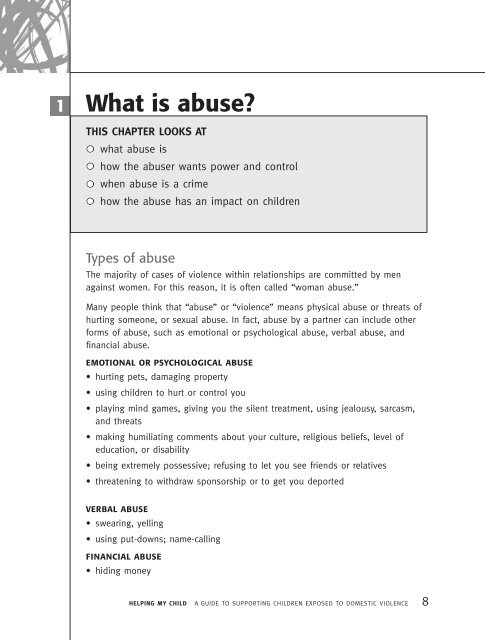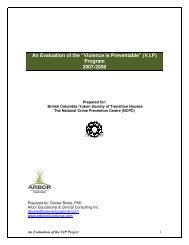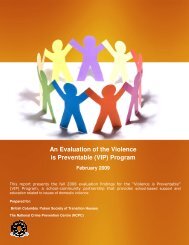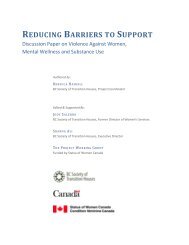a guide to supporting children exposed to domestic violence
a guide to supporting children exposed to domestic violence
a guide to supporting children exposed to domestic violence
You also want an ePaper? Increase the reach of your titles
YUMPU automatically turns print PDFs into web optimized ePapers that Google loves.
1<br />
What is abuse<br />
THIS CHAPTER LOOKS AT<br />
what abuse is<br />
how the abuser wants power and control<br />
when abuse is a crime<br />
how the abuse has an impact on <strong>children</strong><br />
Types of abuse<br />
The majority of cases of <strong>violence</strong> within relationships are committed by men<br />
against women. For this reason, it is often called “woman abuse.”<br />
Many people think that “abuse” or “<strong>violence</strong>” means physical abuse or threats of<br />
hurting someone, or sexual abuse. In fact, abuse by a partner can include other<br />
forms of abuse, such as emotional or psychological abuse, verbal abuse, and<br />
financial abuse.<br />
EMOTIONAL OR PSYCHOLOGICAL ABUSE<br />
• hurting pets, damaging property<br />
• using <strong>children</strong> <strong>to</strong> hurt or control you<br />
• playing mind games, giving you the silent treatment, using jealousy, sarcasm,<br />
and threats<br />
• making humiliating comments about your culture, religious beliefs, level of<br />
education, or disability<br />
• being extremely possessive; refusing <strong>to</strong> let you see friends or relatives<br />
• threatening <strong>to</strong> withdraw sponsorship or <strong>to</strong> get you deported<br />
VERBAL ABUSE<br />
• swearing, yelling<br />
• using put-downs; name-calling<br />
FINANCIAL ABUSE<br />
• hiding money<br />
HELPING MY CHILD A GUIDE TO SUPPORTING CHILDREN EXPOSED TO DOMESTIC VIOLENCE 8






